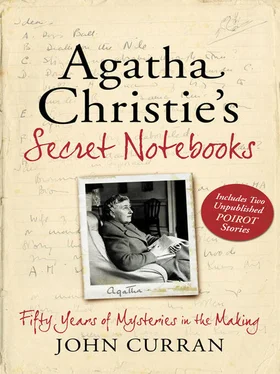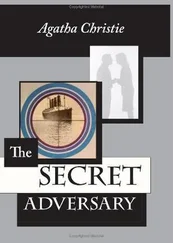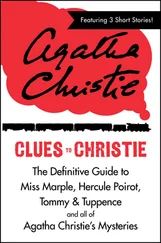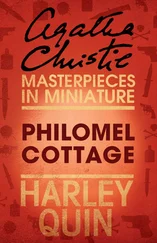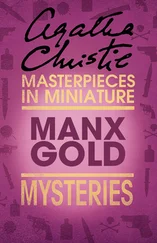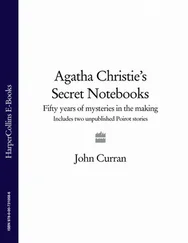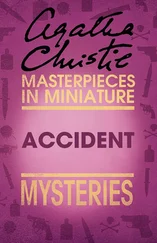As early as 1955, seven years before its first presentation, in Notebook 3 Christie was including Rule of Three in a list of ‘Projects’. The same list also anticipates what were to become Four-Fifty from Paddington (‘New Book Miss M?’ below) and the next Westmacott novel, eventually titled The Burden. At that stage the three projected plays were to be adaptations of existing, and mutually contrasting, stories; both ‘Accident’ and ‘The Rajah’s Emerald’ are from The Listerdale Mystery and ‘S.O.S.’ is included in The Hound of Death. It is worth noting that ‘The Rajah’s Emerald’ has a thematic connection—the disappearance of jewels on a beach—with the play eventually decided upon, Afternoon at the Seaside; and both are lighthearted in tone. The grim poisoning short story ‘Accident’ had already been adapted in 1939 by Margery Vosper as Tea for Three.
General Projects 1955
Angle of Attack Mary Westmacott
The Unexpected Guest Play 3 Acts
Three Plays (Rule of Three?)
1. Accident?
2. Rajah’s Emerald?
3. S.O.S.?
New Book Miss M? P?-
By Notebook 24, two of the eventual titles, C and B below, were included in the following jotting, ‘S.O.S.’ (although with a question mark) still remaining as the third. Inexplicably, they are listed on the page in reverse alphabetical order; when presented The Rats is performed first, followed by Afternoon at the Seaside, and culminating with The Patient.
Rule of Three 3 1-Act plays for P.S.
C. The Patient
B. Seaside Holiday—I do like to be beside the seaside
A. S.O.S.? [sic]
The Locket
Christmas Roses
Green Paint Or Telephone Call—
‘P.S.’ was Peter Saunders, her long-time producer. Though the remaining references are elusive, the ‘telephone call’ in the second list is probably the seed of The Rats, where the telephone sets the trap into which the rats are lured; and ‘Green Paint’ may be a cryptic reference to the proposed innovation she had in mind for the end of The Patient (see below).
The Rats
Adulterous lovers Sandra and David each receive a phone call inviting them to the flat of a mutual acquaintance. When they try to leave they discover that they are locked in—and there is a dead body in the Kuwait Chest.
The Rats is not a whodunit although there are a few mysterious deaths, explained by the end of the play. The most obvious similarity is to the Poirot story ‘The Mystery of the Baghdad Chest’, and its later and more elaborate version, ‘The Mystery of the Spanish Chest’. In that story a suspicious husband hides in the chest hoping to catch his wife and her lover in flagrante; in The Rats, when the Sandra and David realise that they have been lured to the flat, they suspect a similar trap. But the play develops in a more macabre fashion. It does retain the clue of the little heap of sawdust beneath the chest that gives Poirot ‘furiously to think’ in the short story. Notebook 24 contains almost five pages of notes:
The Rats
Flat belongs to the Torrances—rather bare—a Kuwait chest is centre—high up into roof- built in cupboards—a dark divan covered with curtains etc.—a long ply wood table— some modern chairs—one or two pieces of Persian pottery—a big Arab long nosed beak nosed coffee pot
Body in cupboard—Baghdad Chest—Oh! My God—It’s Robert—Police will come—girl and man discover body of her husband—Alec arrives—a Mischa like person—says he got phone call
Although there have been gay characters in Christie before this (Mr Pye in The Moving Finger, Murgatroyd and Hinchcliffe in A Murder is Announced and Horace Bundler in ‘Greenshaw’s Folly’), Alec in The Rats is the most unequivocal and stereotypical example and far more sinister than, for example, Christopher Wren in The Mousetrap. He is described in the script as ‘the pansy type, very elegant, amusing, inclined to be spiteful’ and his love for Sandra’s former husband is openly discussed. The Mischa reference, above, is puzzling.
Afternoon at the Seaside
A family afternoon on the beach culminates in the capture of a jewel thief and some unexpected revelations—and a resolve to go elsewhere for next year’s holiday.
Of the three plays in Rule of Three, Afternoon at the Seaside is the most unlikely for Agatha Christie to have written. It has been compared to a saucy seaside English postcard, set as it is entirely on a beach and involving, at one stage, a female character changing into her swimsuit onstage. The plot, for Christie, is slight and the humour is at times forced. It is definitely Christie on autopilot—but there is one surprise, representing a new variation on an old Christie theme. Ironically the notes for it are extensive, extending to almost 40 pages, albeit with a lot of repetition. There is much speculation about the naming both of the families (the aptly named Mr and Mrs Sour, described as ‘whiners’, become Mr and Mrs Crum) and the beach huts:
Sea View (Mon Repos) Wee Nook
Mrs. Montressor Mr Wills Mrs Wills Genevieve Batat
At the Seaside
Iniskillen Bide a Wee Mon Repos
Mr Sour Wilkinson Arlette
Child Mr Robbins Incognita
Mrs Sour Mrs. Robbins Yvonne
(Whiners) Wilkinson
But further into the notes there are flashes of the Queen of Crime in the unmasking, not of the villain, but of the policeman—or to be strictly accurate, the policewoman:
Read in paper—robbery at Aga Khan—emeralds/sapphires—
Beach
Mon Desir
Policewoman Alice Jones acting as vamp
Young man and his girl quarrel—another young man and they bring down deck chairs—
Some ideas are reminiscent of the Christie of old, even for this short, untypical effort. And, obviously, her ability to spin variations on a theme has not deserted her. The ‘switch of trousers’ idea has distinct echoes of ‘The Rajah’s Emerald’ from The Listerdale Mystery:
Does detective arrive—search the huts? Find emeralds?
Or does old Grubb find it in bucket?
Or child kick pile of sand—Grubb picks out emeralds
God bless my soul
Reasonable possible ideas
Or switch of trousers—Percy gets in the wrong ones
Somers (weakly and gentlemanly—really cat burglar)
Or counterfeit money
Or put into wrong hut
Does Percy get hit with beach ball
Or blackmail
The Patient
Mrs Wingfield is paralysed as a result of a fall from the balcony of her home. Her doctor has found a way to communicate with her and is about to do so in the presence of her family. But someone doesn’t want her to tell the truth of that fateful afternoon.
It is a shame that so few Christie fans are familiar with The Patient, as, in many ways, it is the essence of Christie—a closed setting, a limited family circle of suspects, a crafty distribution of suspicion; and all in 40 minutes. It also contains one of her most artfully concealed clues. Unlike the other two plays in this trilogy, it is a pure whodunit with a stunning curtain line. Yes, it is contrived (an immobilised patient communicating via a once-for-Yes-twice-for-No light switch) but so are many other detective plots, including some of her own best titles. Notes for the play appear in Notebooks 22 and 24:
The Patient
Nursing Home—Doctor and Nurse (Patient there? Or wheeled in later)
Is latter the one who has established communication—
Sales talk by Inspector—jewellery disappeared
Mrs. X badly injured—paralysed—unable to communicate—ingenious nurse pressure of fingers—apparatus with red bulb—Patient wheeled in—
Читать дальше
Конец ознакомительного отрывка
Купить книгу
